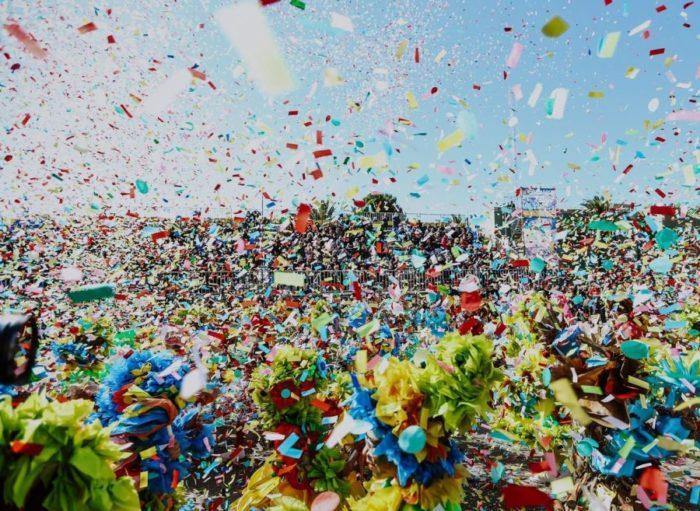In Italian we have a saying: “A Carnevale ogni scherzo vale” which translates as “During Carnival, any joke goes”. It would be more accurate to say that anything sweet goes!
The Perfect Foodie Festivity
Carnival is a time for excesses, and the majority of these are certainly related to food. Italian Carnival has a varied range of typical desserts, pastries and sweet treats, home-made and artisan-made. So the most cheerful festivity of the year also becomes the most gourmet: some families pass down the recipes for these traditional sweets from generation to generation.
From North to South, each Italian region presents its own small differences in the sweets’ characteristics and names. We can recognise at least two different kinds of Carnival treats: leavened sweets and deep-fried sweets.These are the confections most associated with this Italian festivity. They are so popular because in the past there was a need to produce a lot of confections, quickly and cheaply, to accommodate the demand.
What Italian Sweets Are There?
Here is a short list of regional sweets, and we will explore some of the most famous desserts.
- In Friuli you can enjoy castagnole, meaning “small chestnuts” due to their small, round shape, resembling the autumnal fruit. These deep-fried pastry morsels are fragrant on the outside and soft on the inside. Similar to doughnut holes, aniseed is a typical flavouring. They are an unmissable sweet treat among the parades and masks, rolled in caster sugar and sometimes filled with vanilla or chocolate pastry cream.
- Experience Tortelli (yes, like the pasta) in Emilia Romagna and Lombardy: also called “sweet ravioli”, ravioli dolci, made with puff pastry filled with jam, dried fruits and nuts and sometimes ricotta.
- In Florence, the most famous sweet is the schiacciata (meaning “pressed”). A soft and delicate yellow cake, with orange zest and juice and sometimes saffron. In the past it was leavened with brewer’s yeast and the recipe included lard; today this delicious Italian cake has a much easier recipe. Serve it with chantilly cream and decorate it with a sprinkling of icing sugar in the shape of the city’s symbol: the Florentine lily.
- In the middle of Italy, we find cicerchiata, small pillowy sweet gnocchi, deep-fried and soaked with honey, very similar to Neapolitan struffoli.
- Always in Naples try the delicious cauzone, similar to sweet ravioli, filled with a sweet mixture made with pecorino, the Italian sheep’s milk cheese.
Zeppole: Classic Italian Donuts
Zeppole are an absolute must at Carnival, and widespread throughout the entirety of Italy. They are in the shape of rings, deep-fried and without filling. Their recipe is one of the most ancient. My nan -obviously- makes the best zeppole I have ever eaten, with a little bit of saffron, and she always says that the secret is in the flour and the leavening you use. Once I had a friend of mine here in England try one. My friend said: “it’s like a doughnut but from Heaven.” I guess that’s the power of my Grandma’s cooking.
Let's Talk About Chiacchiere, The Most Famous Carnival Sweet
Finally, the most famous and widespread along Italy are the chiacchiere, literally translated as "chatters". Their name varies from region to region and according to popular belief, their origin is as old as the Romans. Chiacchiere are crunchy and delicate shortcrust pastry sheets. They are very friable. Roll out a simple pastry dough as thin as can be, and then deep fry it and sprinkle it very generously with powdered sugar.
The flavours include marsala sweet wine, acquavite, or orange blossom water. They can also be with chocolate, honey, sweet mascarpone or soaked with alchermes, a herby, spicy spirit you use to make the traditional Italian dessert Zuppa Inglese.Their appearance in sweet shops windows makes the atmosphere immediately more cheerful. Whether it is the first or the millionth time you try this delicious Italian confectionery, each bite is always magical.



